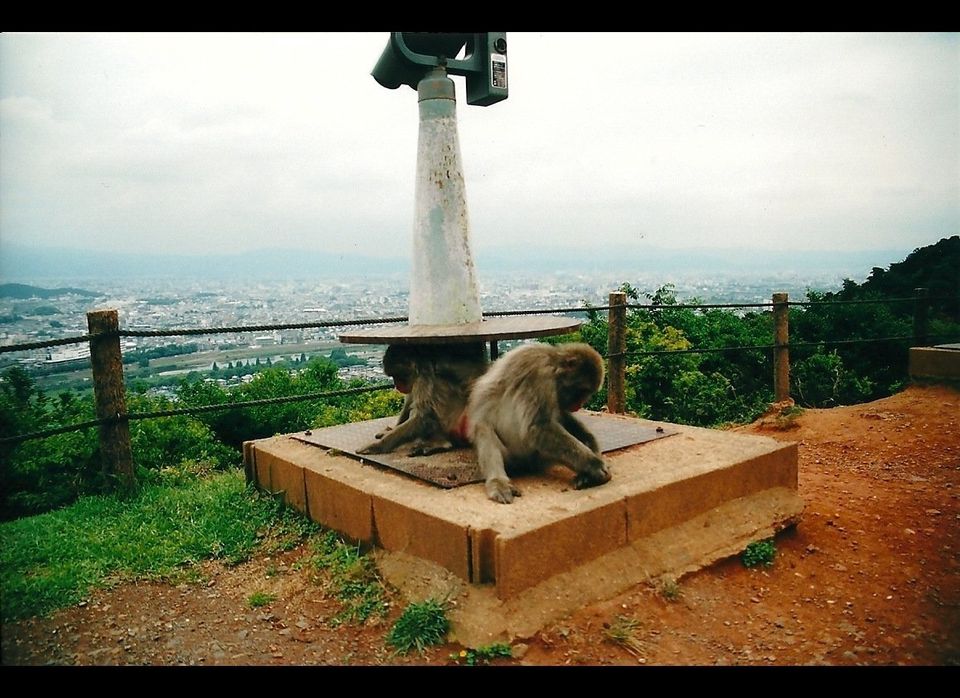On the western edge of Kyoto, there is a district called Arashiyama that the Japanese Government's Agency of Cultural Affairs has dubbed a national historic sight for its temples, architecture, bamboo forest and scenery. Not often frequented by international visitors, it feels removed from the hustle of the rest of Kyoto, where the urban landscape only seems to stop for the next temple and garden complex. The Togetsukyo Bridge extends from Arashiyama over the Hozu (or Katsura) River to Mount Arashiyama, the namesake of the district.
Near the bridge, at the foot of Mount Arashiyama, a trail switchbacks up the mountain. For those up for the hike, at the end of the trail lies Iwatayama Monkey Park.
Monkey Parks are peppered throughout Japan, usually at the fringes of a town or urban area. They offer visitors a chance to interact directly with wild monkeys, in a somewhat controlled setting. The patrons tend to be families with young children, but there are plenty of solitary visitors and couples out for an offbeat date. The structure of Iwatayama Monkey Park is typical of the many others throughout Japan. Admission is 500 yen (about $6). Bags of snacks for the monkeys can be bought for 100 yen. These snacks can only be given to the monkeys from the inside of a hut on the premises, meaning that the monkeys must hang on the wire mesh of the windows and grab the food from people's hands. This regulation ensures that the monkeys won't harass people while they are outside.
A few other rules are posted, both in Japanese and legible-enough English, but the most important one is to avoid making prolonged eye contact with the monkeys, which is taken as a sign of aggression and responded to in kind. Iwatayama Monkey Park's grounds also include a pond for the monkeys, a children's playground and several outdoor telescopes on platforms through which Kyoto can be viewed.
The city looks very far away.
Thanks to my my Japanese friend Mari for allowing me to use a picture from her 1985 family trip to Odo Monkey Park.
